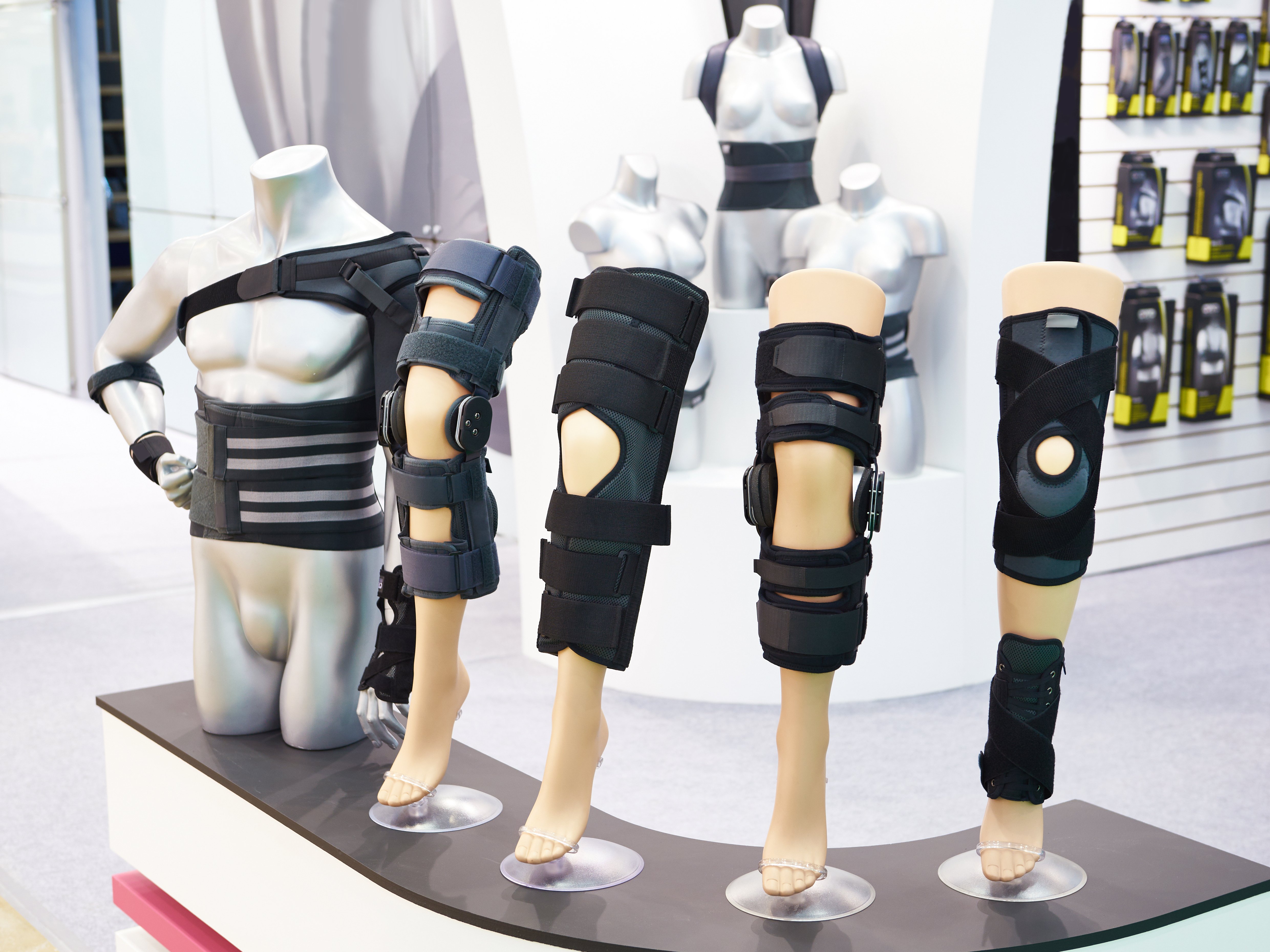How to choose the best knee brace for a torn MCL?

How to choose the best knee brace for a torn MCL?
Knee injuries are one of the most frequently injured joints in the body, especially in the athletic population. One of the most common knee injuries is an injury to the Medial Collateral Ligament (MCL). Early intervention after an MCL injury with physiotherapy treatment, exercise and MCL knee bracing is imperative for your recovery.
One of our patients with a grade 2 MCL strain was having difficulty returning to work due to the need for her to walk around a retail area. She found that when she pivoted to change directions her knee pain would increase. When we provided her with a hinged knee brace, her confidence when walking at work increased and she had less pain.
In this post, we’ll explain why its important to understand what grade of MCL sprain you have, and how to choose the best MCL knee brace.
![AdobeStock_538152098 [Converted]](https://8637580.fs1.hubspotusercontent-na1.net/hub/8637580/hubfs/AdobeStock_538152098%20%5BConverted%5D.png?width=6186&height=3001&name=AdobeStock_538152098%20%5BConverted%5D.png)
What is a MCL ligament?
The Medial Collateral Ligament (MCL) is located on the inside of the knee and connects the femur (thigh bone) to the tibia (shin bone). The primary job of the MCL is to prevent sideways or lateral movement of the knee joint. When a force comes from the outside of the knee, it stretches the MCL and can result in different degrees of tearing. MCL Injuries occur in 7.3 per 1000 people
How Severe is my MCL injury?
There are 3 different grades of MCL sprains, each of which depends on the extent of the Injury:
Grade 1 MCL Sprain:
- The mildest of the 3 grades.
- There is usually no swelling
- Your function will be relatively normal
- There may be a small amount of pain
- The knee should not have instability
Grade 2 MCL Sprain:
- Moderate swelling and pain will be felt along the MCL and inside of the knee
- Joint laxity present
- This degree is often the most painful, as some nerves remain intact to send pain signals to the brain
- The ligament is partially torn during a grade 2 strain
Grade 3 MCL Sprain:
- The most severe of the 3 grades
- Tenderness and pain to the MCL
- There may be knee instability
- The ligament is fully torn in a grade 3 MCL sprain
![AdobeStock_538152032 [Converted]](https://8637580.fs1.hubspotusercontent-na1.net/hub/8637580/hubfs/AdobeStock_538152032%20%5BConverted%5D.png?width=5001&height=3620&name=AdobeStock_538152032%20%5BConverted%5D.png)
Which knee brace is right for you?
A knee brace is an excellent option for anyone suffering from a MCL injury. The extra stability that a MCL knee brace can offer is particularly helpful in preventing lateral movement that can further damage your knee.
Hinged knee braces are often the most effective for MCL sprains. When you have an MCL sprain, lateral forces on the knee will put stress on the ligament and increase pain. In early stages of rehab, it is best to decrease lateral forces on the knee to help start the healing process.
However, as the ligament starts to heal, it is actually important to stress the MCL to help stimulate healing. Your physiotherapist is a great resource for when you should start and stop wearing a brace for an MCL injury.

Different Knee Injuries Require Different Knee Braces
There are five main types of knee braces:
- hinged braces
- customized knee braces
- compression sleeves
- small bands and straps
- wraparound knee braces
Compression sleeves and small bands may help decrease pain and swelling, but do not provide any structural support to the knee. Customized knee braces may provide structural support and decrease swelling, but are often more expensive due to being custom made for you.
2 Features to Consider when Choosing the BEST Knee Brace for a Torn MCL…
Knee Stability
An MCL Knee Brace should provide a high level of stability, which often requires hinges on either side of the knee. That is why a hinged knee brace is often more appropriate for an MCL sprain, compared to a knee sleeve or wrap.
Ease of Use
Often one thing that gets over-looked in purchasing a brace is how easy it is to get on and off. If the knee brace is to complicated to put on, or is too bulky, people will often choose not to wear it at all. It is important that your brace fits comfortably to increase adherence and reduce skin irritation.
Key points to consider when choosing the best knee brace for a MCL tear include stability of the brace, ease of use, and comfort. Your physiotherapist will help you determine the correct size, material, shape, and stability needed for your MCL tear.
If you think you have an MCL injury, it is important to see a physiotherapist to get started on a rehab program! Contact our staff at Human Integrated Performance to get set up with a physiotherapist and start your rehab journey.